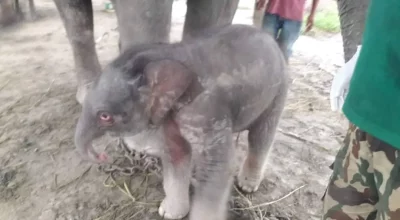
WASHINGTON, DC – When I took my children to receive their polio vaccines a few years ago, I thought about how lucky we are to live in a place where we can access lifesaving interventions with such ease. We didn’t need to take a long bus ride or walk great distances to get to the clinic, and there was no reason to think that there would be no doses in stock.
Although I was fully aware of the protection my children were receiving, I never considered that poliovirus could pose a real threat in Washington, DC. After all, the virus hadn’t been found in the United States for years. But recent developments are a wake-up call, underscoring just how critical something as simple and routine as vaccination can be.
In July, health authorities confirmed that polio had paralyzed an unvaccinated person in New York. It was the first US case in nearly a decade. Then, the virus was found in wastewater in other parts of New York State, which followed the news that London had also detected poliovirus in its sewage. The World Health Organization has now declared both the US and the United Kingdom outbreak countries for variant poliovirus.
Globally, such stories are not unique. Earlier this year, wild polio cases were confirmed in Africa for the first time in over five years, serving as a chilling reminder of how fragile the world’s progress against polio is. While cases have plummeted by more than 99% since the 1988 launch of a global effort to eradicate the disease, the final stretch to absolute zero has been difficult, even though it is essential.
Fortunately, there is a global strategy in place to finish the job; but to succeed, it will need to be funded properly. Launched last year, the Global Polio Eradication Initiative’s (GPEI) five-year Strategy is already being implemented to stop and prevent additional outbreaks. At the strategy’s core are two priorities: working with at-risk countries to protect every child with vaccines, and improving surveillance to track the spread of the disease. The same strategy is also helping to deliver other lifesaving vaccines to communities in remote areas, as well as working to strengthen health systems.
The Bill & Melinda Gates Foundation joined the GPEI, alongside the WHO, UNICEF, Rotary International, and the US Centers for Disease Control and Prevention, in 2007, because we recognized the opportunity the world had to ensure that polio never paralyzed a child again. That opportunity is even more apparent today. Wild polio remains endemic in only two countries – Pakistan and Afghanistan – and though case numbers have risen slightly this year, they are still at extremely low levels.
There is not only a moral case for ending polio. As a health economist, I also focus on the broader impact that such achievements can have. For polio, the financial benefits of eradication would be enormous. If we wipe out the poliovirus within the timeframe set by the current strategy, the world could save more than $33 billion this century, compared to the cost of continuing to control future polio outbreaks.
A growing chorus of stakeholders recognizes this financial dimension and the opportunity it represents. Gavi, the Vaccine Alliance, a public-private partnership that provides support for routine immunization in 73 of the world’s poorest countries, joined the GPEI in 2019. And just this month, more than a thousand global health experts and scientists from around the world signed a declaration urging countries to fund the global polio strategy fully.
Donors must heed this call and ensure that the GPEI receives the $4.8 billion it needs. A fully funded strategy will be able to vaccinate 370 million children every year for five years, while also better preparing countries against future health threats. Throughout the COVID-19 pandemic, GPEI infrastructure was the first line of defense for many countries. Since the start of the COVID-19 pandemic in 2020, the polio program has lent support for contact tracing, disease surveillance, and community engagement, as well as facilitating the rollout of vaccines. This is not a one-off example: GPEI has responded to threats such as Ebola, measles, and yellow fever, consistently demonstrating a high return on investment.
To be sure, the final stretch in the race against polio has proven the most difficult, and recent events have made matters more challenging. The pandemic reversed progress on routine immunization globally. Violent conflict, vaccine mistrust, and misinformation continue to present barriers in the last areas where polio hides. Owing to this year’s devastating floods in Pakistan, efforts to stop polio from spreading there must be redoubled.
Still, while the destruction in Pakistan is staggering, it has been heartening to see the impressive response mounted by the government and the international community. Additional support is still needed to prevent further hardship, because the high waters are impeding access to health care and accelerating the spread of waterborne diseases like polio, cholera, and typhoid. There is no doubt that such conditions make it more difficult to stop polio.
But these challenges are not insurmountable. GPEI partners and governments around the world have the collective experience and a clear plan to overcome them. And this month at the World Health Summit in Berlin, donors have an opportunity to help achieve a polio-free world by pledging resources to the GPEI.
When we invest in polio eradication, we invest in a healthier world today and for generations to come. That is why our foundation remains steadfastly committed to the GPEI’s mission. We urge others to join us so that we can finally complete it.
Gargee Ghosh is President of Global Policy and Advocacy at the Bill & Melinda Gates Foundation.
Copyright: Project Syndicate, 2022.
www.project-syndicate.org
















